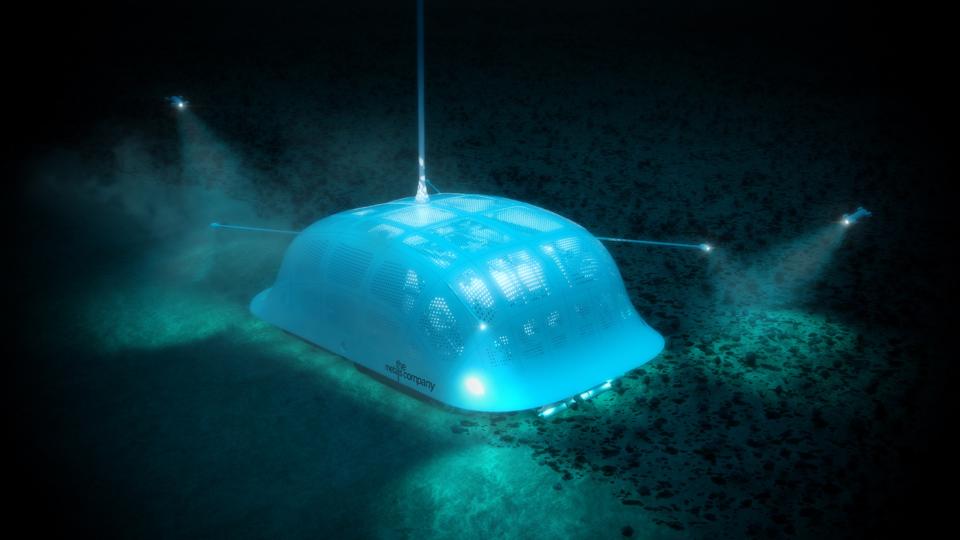During Part II of its 28th session, which closed on Friday, July 21, the Council of the International Seabed Authority made significant progress on draft regulations to govern seabed mining. But contrary to widespread expectations, the Council did not adopt the regulations and give the go-ahead for extraction to begin; instead, it announced a roadmap for continued work that targets adopting them at its 30th session in 2025.
Gerard Barron, Chairman and CEO of Canada’s The Metals Company, was “disappointed” when the clearance to begin mineral extraction wasn’t approved as he’d hoped. But despite that regulatory body’s deferral of potential approval, Barron remains bullish about underwater mining. “It is now a question of when–rather than if–commercial-scale nodule collection will begin,” he said.
It’s been an increasingly contentious issue, particularly as the recent ISA meetings approached. Undersea mineral exploitation is touted by industry advocates and companies such as TMC that are ready to begin extraction as a much-needed way to address the predicted shortage of needed minerals and metals in coming years.
For Barron, the answer is clear. His company is targeting robotic collection of polymetallic nodules containing cobalt, nickel, copper and manganese that lie unattached to the seabed in the Pacific Ocean about 1,000 miles off the coast of Mexico. To him, it’s the most environmentally friendly solution. “It makes sense we have our extractive industries where there’s the least amount of life, not the most,” he said. “Mining in places like Indonesia right now is causing massive deforestation, and there’s Indigenous land being taken away. This is a solution that’s right on America’s doorstep. The beauty of this is there’s really no mining–we’d just be out picking up rocks.” Recent research indeed found that Indonesia suffers over half of all industrial mining-related deforestation.
That last part Barron mentioned may be an oversimplification, but he says TMC has partnered with a company that’s been laying pipe on the seafloor for 38 years, Allseas. They’ve already completed an 82-kilometer test, collecting 4,500 tons of rocks at a rate of 86.4 pounds per hour.
Others aren’t so sure of the safety of the process, however. Speaking to Reuters recently, Jessica Battle, ocean expert at the Worldwide Fund for Nature, expressed concerns. “What seems crystal clear is that the majority of states feel very uneasy about a license being granted before the regulations are in place, enough scientific research is done and the effective protection of the marine environment can be ensured.”
Opponents are concerned about the effects on deep-sea wildlife, creatures that have been little studied and many of which have only recently been identified, in large part thanks to data gathered by contractors. There are also worries about the return of sediment washed from the nodules into the ocean with critics charging that the effects of the resulting plumes remain poorly understood, though an MIT study indicated that the plumes might be less problematic than environmentalists feared. Doubtless these kinds of considerations are part of what have slowed the finalizing of the regulations by the ISA, however.
The trouble is, Western nations in particular have been quick to make commitments to curtail fossil fuel use and mandate electrification, but slow to make any provisions for where the required raw materials will come from. The Biden administration has had a recent track record of upending planned American mines, while just last month U.S. Rep. Ed Case (D, HI) introduced H.R.4536, a bill opposing the permitting of deep seabed mining and exploration for deep seabed mining.
“You can’t have it both ways,” said Konstantin Christoulakis, Senior Manager Copper for a London-based metals trading firm. “You can’t say, ‘I don’t want any more fossil fuels. Also, you can’t mine.’ It doesn’t work that way. Something that’s very important to note is that metals and minerals are on the forefront of the energy transition. And sometime after 2025, what we’re mining on land will be insufficient. We’ll have to look at the seafloor.”
For the present time, however, America’s approach to undersea mining looks to be following the environmentalist NIMBY-ism that has gripped the U.S. for the last several decades. That aversion to legacy mining has allowed China to cement a firm hold on both surface mining and mineral processing, particularly with respect to those resources most needed for electrification, creating deep concerns for both economic stability and national security.
Now China also holds five of the 31 exploration contracts issued by the ISA, while not a single one is held by an American company. The U.S. isn’t even a member nation of the ISA, as it has not ratified the required UN Law of the Sea Treaty. Originally that was because President Ronald Reagan objected to its restrictions on undersea mining, wanting to keep America’s options open. It’s therefore ironic that now it instead risks America being left behind in another treasure trove of much-needed mineral resources.
Perhaps a Canadian company can help. “We have enough metal in our contract areas for 280 million EV batteries,” said Barron. “That’s enough for the entire U.S. fleet.”

